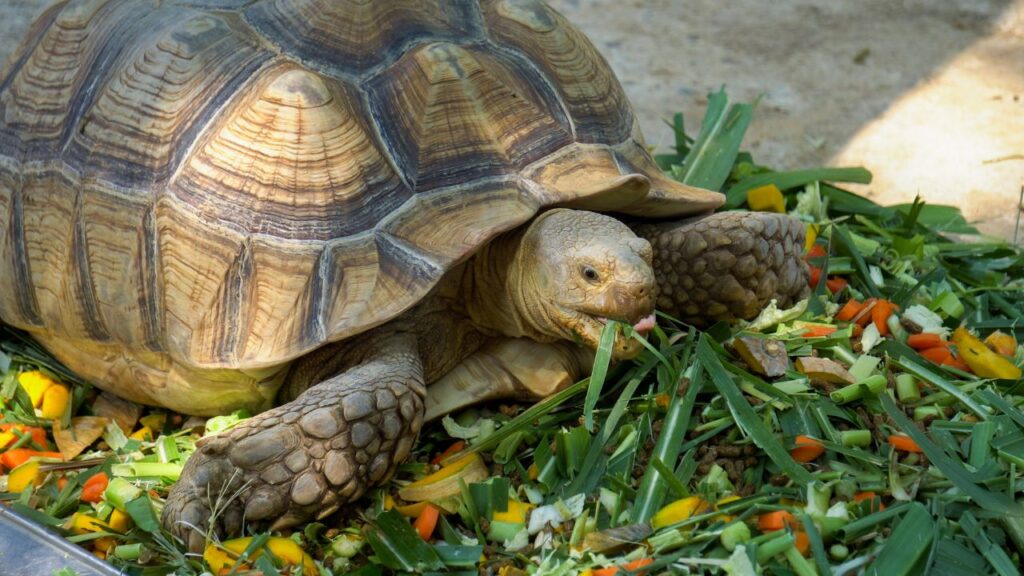When you think of bees, you probably imagine fuzzy little creatures buzzing from flower to flower, collecting nectar and pollen. But nature has a surprise in store: vulture bees. These unusual insects have traded their sweet tooth for a taste of meat. Found in tropical forests of South and Central America, vulture bees have evolved to feed on carrion instead of nectar. Their unique diet and behavior set them apart from their flower-loving cousins.
They’re Not Actually Vultures
Vulture bees got their name from their eating habits, not their appearance. These bees are about the same size as honey bees, but they have some key differences. Their bodies are smoother and less hairy than typical bees. This helps them avoid getting bits of rotting meat stuck to their bodies. They also have sharp teeth-like structures on their legs, which they use to slice and dice their meaty meals. Despite their name, vulture bees are still true bees and belong to the genus Trigona.
They Feast on Dead Animals
Unlike other bees that sip nectar from flowers, vulture bees prefer a protein-rich diet of dead animals. They’re particularly fond of lizards, snakes, and birds. When they find a carcass, they use their sharp mandibles to cut off small pieces of flesh. They then carry these bits back to their hive. The bees don’t eat the meat right away, though. Instead, they store it in special pots made of wax, where it ferments and becomes safe for the bees to eat.
Their Honey Is Not For Human Consumption
You might be wondering if vulture bees make honey like other bees. The answer is yes, but you definitely don’t want to eat it! The “honey” produced by vulture bees is actually made from the rotting meat they collect. It’s stored in the hive and used as food for the bee larvae. This meat-based honey is acidic and probably tastes awful to humans. It might even be dangerous to eat because of the bacteria from the rotting flesh.
They Have a Unique Gut Microbiome
To digest their unusual diet, vulture bees have developed a special gut microbiome. This is the collection of bacteria and other microorganisms that live in their digestive system. Scientists have found that vulture bees have gut bacteria more similar to those found in vultures and other carrion-eating animals than to other bees. These special bacteria help the bees break down the meat they eat and protect them from harmful pathogens that might be present in rotting flesh.
They’re Stingless Bees
Despite their tough-sounding name and meat-eating habits, vulture bees are actually stingless. They belong to a group of bees called Meliponini, which are known for their lack of stingers. But don’t think this makes them defenseless! Vulture bees can still bite with their strong jaws if they feel threatened. Some species even have a painful bite that can cause swelling and irritation.
They Live in Complex Social Colonies
Like many other bee species, vulture bees are social insects. They live in large colonies with a clear division of labor. Each hive has a single queen bee who lays all the eggs. The rest of the bees are workers, responsible for foraging, caring for the young, and maintaining the hive. These colonies can be quite large, sometimes containing thousands of individual bees. The complex social structure helps the colony survive and thrive in their tropical forest homes.
They Have Excellent Eyesight
Vulture bees have developed keen eyesight to help them spot carrion from a distance. Their eyes are larger in proportion to their body size compared to other bee species. This improved vision allows them to spot dead animals on the forest floor, even in the dim light under the canopy. Once they find a carcass, they can quickly alert their nestmates and start collecting the meat before other scavengers arrive.
They Use Pheromones to Communicate
Like other bees, vulture bees use chemical signals called pheromones to communicate with each other. When a foraging bee finds a good source of meat, it releases a special pheromone to alert its nestmates. This chemical trail helps guide other bees from the colony to the food source. Pheromones also play a crucial role in maintaining the social structure of the hive, helping bees recognize their nestmates and the queen.
They Face Competition from Other Scavengers
Vulture bees aren’t the only animals interested in carrion. They often have to compete with other scavengers like ants, flies, and even larger animals. To get their share of the meat, vulture bees have developed some clever strategies. They’re often among the first to arrive at a carcass, thanks to their keen eyesight and fast flying. Some species also produce secretions that repel other insects, giving them an edge in the competition for food.
Their Nests Are Well-Defended
Vulture bee nests are fortress-like structures designed to keep out intruders. The entrance to the nest is usually a small hole, just big enough for a single bee to pass through. This makes it easier for guard bees to defend against potential threats. Some species even build their nests inside termite mounds for extra protection. The tough outer shell of the termite mound provides an additional layer of defense against predators and harsh weather.
They Play a Role in Decomposition
By feeding on carrion, vulture bees play an important role in their ecosystem. They help break down dead animals, recycling nutrients back into the environment. This process is crucial for maintaining the health of tropical forests. Without scavengers like vulture bees, dead animals would pile up and potentially spread disease. So, these little meat-eaters are actually doing an important clean-up job in their forest homes.
They’re Not Picky Eaters
While vulture bees prefer fresh meat, they’re not too picky when it comes to their food sources. They’ve been observed feeding on a wide variety of dead animals, from tiny insects to larger mammals. Some species will even scavenge meat from kitchen waste in areas where humans live nearby. This adaptability helps vulture bees survive in different environments and take advantage of whatever food sources are available.
They’re Being Studied for Medical Applications
The unique gut bacteria of vulture bees have caught the attention of scientists. Researchers are studying these microbes to see if they might have useful applications in medicine. The bacteria that help vulture bees digest rotting meat without getting sick might lead to new antibiotics or treatments for digestive problems in humans. While this research is still in its early stages, it shows how studying unusual animals like vulture bees can lead to surprising discoveries that might benefit human health.
They’re Not Endangered, But Their Habitat Is
Unlike many bee species that are facing population declines, vulture bees aren’t currently considered endangered. However, they do face threats from habitat loss. The tropical forests where these bees live are being cut down at an alarming rate for agriculture and development. As their forest homes shrink, vulture bees may find it harder to find food and suitable nesting sites. Protecting these forests is crucial not just for vulture bees, but for the countless other species that call them home.
They’re Still Full of Mysteries
Despite all we’ve learned about vulture bees, there’s still a lot we don’t know. Scientists are continuing to study these fascinating insects to understand more about their behavior, evolution, and ecological role. New species of vulture bees are still being discovered, and each one might have its own unique adaptations and behaviors. The world of vulture bees is a reminder that nature is full of surprises, and there’s always more to learn about the amazing creatures we share our planet with.



